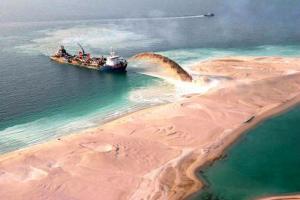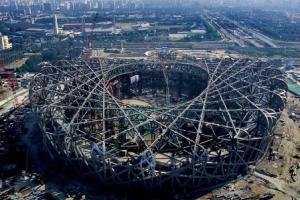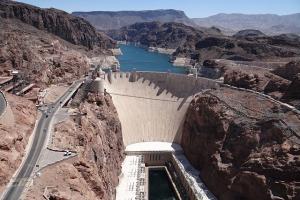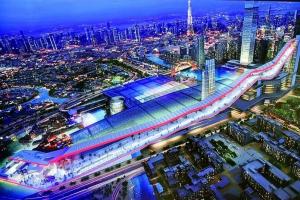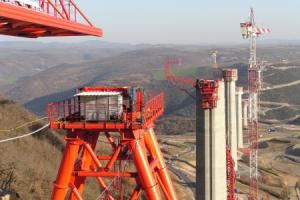The Falkirk Wheel, Scotland - History and Introduction
History & Introduction
The Falkirk Wheel is named after the town of Falkirk in central Scotland,where this project is located. It is a rotating boat lift connecting the Forth and Clyde Canal with the Union Canal. The difference in the levels of the two canals at the wheel is 24 metres (79 ft). The wheel, has an overall diameter of 35 metres (110 ft) and consists of two opposite arms which extend 15 metres beyond the central axle. Two sets of these Axe-shaped arms are attached about 25 metres (82 ft) apart to a 3.6 metres (11 ft) diameter axle.
Two water-filled caissons, each with a capacity of 80,000 imperial gallons (360,000 l/96,000 US gal), are fitted between the ends of the arms. These caissons always weigh the same whether or not they are carrying their combined capacity of 600 tonnes (590 LT/660 ST) of floating canal barges as, according to Archimedes' principle, floating objects displace their own weight in water, so when the boat enters, the amount of water leaving the caisson weighs exactly the same as the boat. This keeps the wheel balanced and so, despite its enormous mass, it rotates through 180° in five and a half minutes while using very little power. It takes just 22.5 kilowatts (30.2 hp) to power the electric motors, which consume just 1.5 kilowatt-hours (5.4 MJ) of energy in four minutes.
Background
When first built, Great Britain's network of canals formed a revolutionary new transport system moving people, goods, and services. The canals served the country well for about 200 years, until railroad cars and trucks took over their functions. Canals fell into a steep decline just before World War II. Lately however, the canal and river network is being revitalized across the U. K. fueled by nostalgia, recreational boating, tourism, and a sense of historic preservation.
One example: the Millennium Link project in Scotland has reconnected the Forth and Clyde Canal with the Union Canal, running between Glasgow and Edinburgh. Where the two canals meet, at Falkirk, their water levels differ by 115 ft. During their working years up until the 1930s a series of 11 locks linked the canals. However, during the demise of the canals, the locks fell into disrepair. They were filled in, and new roads were built on top of some of them. Rather than laboriously and expensively reconstructing the locks, the project contracted to design and build a more innovative solution for transferring boats between the two levels. The result is the Falkirk Wheel, the world's first rotating boat lift; a revolutionary and aesthetically pleasing engineering feat that has become an immediate tourist attraction for the area.




